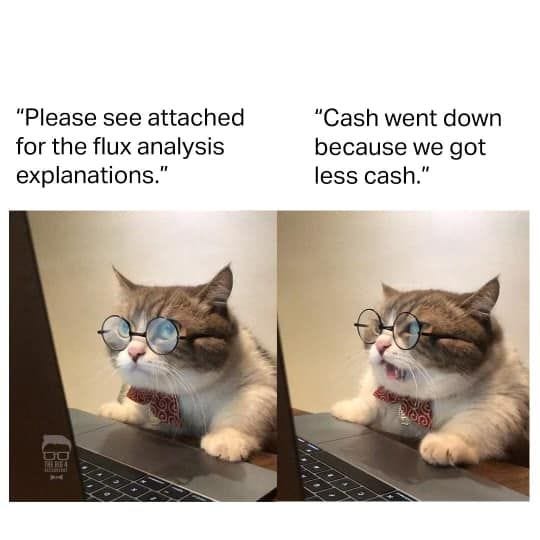July 2024 FP&A Roundup
The best FP&A content in July.
Read this post and join the discussion in Plan Buddies - the #1 community for FP&A professionals.
One Big Insight
My favorite quote with some added commentary from yours truly.
Bonnie Tomei
From Paul Barnhurst’s podcast, FP&A Tomorrow (emphasis added).
What [finance] are trying to do is move the company forward. Being the CFO is really helping to get allocation and prioritization of the resources we have, and helping everybody move the company along.
So that alignment has to be done through proper communication and education. Then, of course we seem like the guy and gal who put in internal control — education will probably help with that. The skill set of somebody in FP&A who wants to become a CFO includes, first and foremost, acumen of the business — helping provide intelligence.
Second, great people skills in moving the business along….What's most effective is education, alignment of priorities, making sure the entire team is understanding why we do this not that, why money gets spent here but not there.
And then lastly, putting together KPIs will help tremendously. So the skill set of somebody in FP&A is understand what makes this company successful and measure against it, delivering that with a great teamwork, great communication, and great education.
One of my mentors taught me two principles that guide the way I approach FP&A:
FP&A is about steering the ship where we want to go. We may not have our hands on the wheel, but we’re charting and forecasting our course to ensure the business ends up where it’s trying to go.
True leaders influence and drive change through people that don’t report to them.
I’ve always felt like I have a good handle on the first principle, but the second one is much harder for me. What I loved about Bonnie’s quote is that she simplified the way I think about driving influence and change — just educate your business partners.
I’d love to hear from you:
How do you influence your organization through education?
I’ll post my favorite responses in next month’s newsletter!
Sound Bites
Great quotes with links to the original source.
Jim Cook
From his newsletter post, Structuring the Decision (emphasis added).
Perfection is Paralysis. 80% Data is enough: the 20% of unknown space helps the team stay agile and to turn any opinions or innovative decisions into data once the 80% decision goes live. Don’t get caught in the fear trap or the perfection trap where not making a decision is the decision while the importance and urgency surrounding the decision festers like a sore wound….
Never challenge the person making the assumptions. This is how listening stops and heels dig in. Only challenge assumptions. Never make it personal….
Everyone needs to be willing to hear a “better idea” or a “better assumption” and be willing to change their position. If you see your team or the decision makers straying from this critical operating value of “best ideas” win, it’s time to remind them of these rules and to “chalk the field” with a leadership speech that principles always trump positions….
Second-level thinking is about understanding the complexities and nuances of a situation, challenging the initial assumptions, and looking for deeper insights that might give one an edge in decision-making. It’s about trying to see things that others don’t, predicting how situations might play out based on a multitude of factors, and making decisions that account for these deeper insights.
Taylor Otstot
From the Plan Buddies event, The FP&A Cycle in Ever-Evolving Businesses (emphasis added).
What I always like to say with my teams is that the budget's going to be wrong on day one…We're going to have a lot of things that were wrong — some things will be in our favor, some things will not be.
The key to all of it is ‘How can we get to the ultimate end result that we're trying to get to even if we're getting there through a different path?’
And so when you're running through the scenarios on your startup…be sensitive to how far does this get us off track…You can miss the top line or you can miss the bottom line. You cannot miss both.
If you identify a scenario where you feel like you’re going to miss top line, identify everything you can do to get your bottom line [back on plan]. [Identify] things [in advance] that we can do to counterbalance, so that we get to our EBITDA number or our cash flow number.
Dan Fletcher
From Sasha Orloff’s podcast, Turpentine Finance (emphasis added).
You should not choose between growth and profitability. You should do both. And your company will be worth more….
I get a little exhausted by the growth versus profitability conversation. But it's true. There is a trade-off. You can't always have both. And sometimes you need to lean in more on one than the other. I think those conversations need to be based on why it matters.
For the vast majority of software businesses, you're valued on revenue, hopefully recurring revenue. And so start with where you're valued. But in other industries, in chemical and energy, you're going to be valued on profitability.
And so, if you are identifying your metric of value, what you're valued on, it is very likely that any type of statistical regression you'll run on public comps over time — whether you get paid more for growth, paid more for profit, is going to map to that simple truth.
If you are valued on profit, you should increase earnings. If you are valued on revenue, then it's going to be revenue growth and revenue predictability, and you should lean in there.
Secret CFO
From his newsletter post, Costs Behaving Badly (emphasis added).
Unit economic analysis is useless without good bookkeeping….
It’s not just about the analysis, you have to bring it back to the ‘corner shop.’ What does it mean in practice? Most FP&A teams are bad at this from my experience….
Good finance teams have an intimate understanding of the business’s unit economics. But GREAT finance teams find ways to share that understanding with the business….
When you look hard enough, all costs are mixed costs.
Very few costs remain the same (either on a $ or per unit basis) for the same business at 10 units and 1,000,000 units….
And suppliers have their own unit economics, so it’s reasonable to believe they can serve you more efficiently as you help them grow their business….
So costs will only behave in a linear way inside certain relevant ranges of volumes….
The crucial point is that unit economics is a science, yes. But it’s an imperfect one. It only works alongside a robust understanding of the business.
Alex Song
From CJ Gustafson’s podcast, Run the Numbers (emphasis added).
And there's almost no function within an organization whose job is to reduce risk to zero. I think that would be wrong….
I think it's more assuming you don't want risk to exceed a certain amount, right? What is the best possible way to deliver shareholder returns?…
Given the confines of the type of business we want to run, we want to make sure our risk doesn't exceed a certain amount. And then what's the profit maximizing thing to do, given some of those guardrails.
[CJ Gustafson’s Response]
Sometimes I do think that we get too fluffy about it. And it's like at the end of the day, dude, [the business] is here to print some money, and in order to do that, you have to sign up for some risks.
Brett Knowles
From Jack Alexander’s podcast, CFO Thought Leader (emphasis added).
Know what good looks like two to three years out….
I often think of Amazon. When Amazon first popped out, it was just a bookstore…Look at it now. What will good look like in three to five years? Well, probably good looked like more than selling just books. Step one, build that retail engine. Step two, move to other products.
So what does good look like?
Memes
Just for fun.




